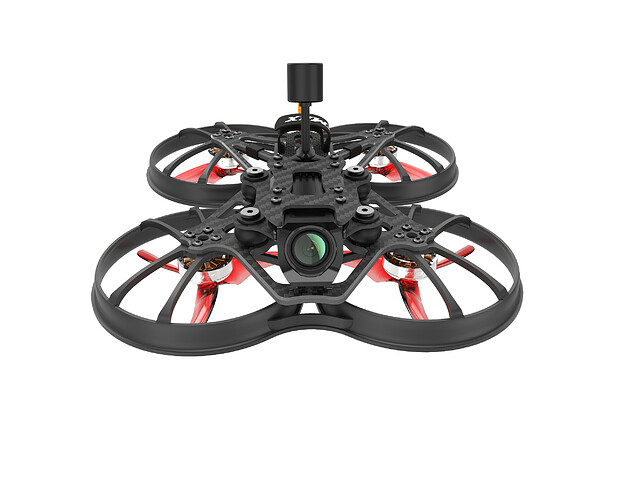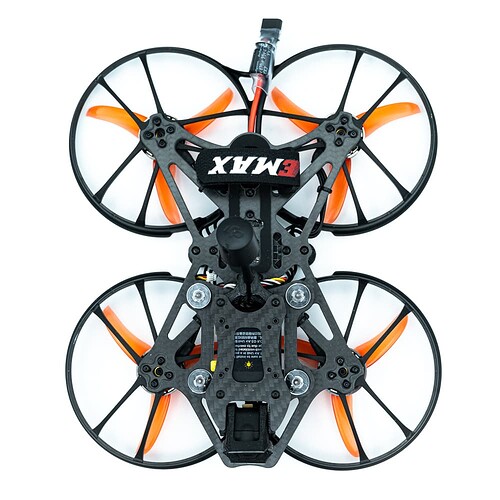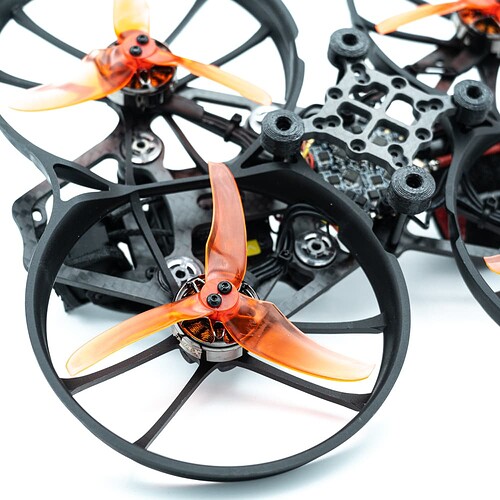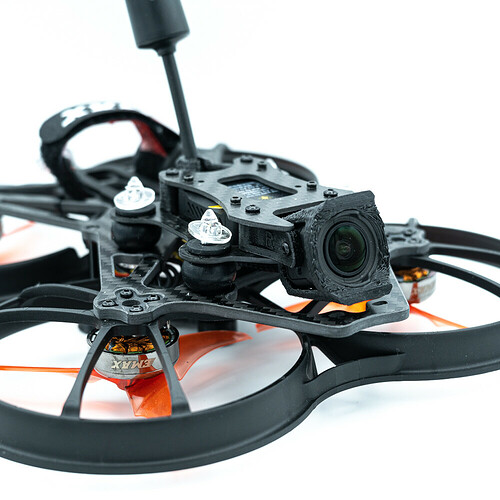EMAX has released a new entry in their Hawk series called the CineHawk. In this review, we will take a look at the unique features of this quadcopter, its flight performance, and video quality based on a bunch of recent reviews of this frame (linked below).
Unique Design
The first thing that stands out about the CineHawk is its unique design. The frame is a single plate design, and the arm structure is sturdy and won’t flex or bend during flight. The ducts are custom-made for this craft, and the frame has a lot of different mounting holes and patterns for various components. The overall frame is flexible but not flimsy.
The craft has a clean/dirty mount section, which is critical for cinewhoops these days. The vibration management system, like actual bobbins, makes it a lot easier to achieve better video quality. The unique design of the CineHawk is impressive, and it’s clear that EMAX has put a lot of thought into how they’ve put it together.
Flight Performance
The CineHawk performs well in flight, and the motors and props work well together. The motors are 2004, with around 3,400 KV, and the props are 3.5 inches, which is an interesting choice instead of the standard 3 inches. The quadcopter runs really well on 4S, and the ducts hold up well to crashes.
Compared to other cinewhoops, like the Foxeer CineWhoop, the CineHawk flies differently. The inverted duct shape on the frame is frustrating, and it’s a shame that it’s still being perpetuated in current designs.
According to Nick Burns in his video, the inverted duct shape on the frame is frustrating because it’s unnecessary and doesn’t add any value to the craft’s performance. He explains that the only reason this still happens and gets perpetuated is because when the community first started taking apart GoPros and building cine whoops like this, they flipped over small, tiny frames, and the duct became inverted. For some reason, this has been perpetuated, even though it’s not necessary for the craft’s performance. He believes that the inverted duct shape is frustrating because it adds unnecessary complexity to the design and makes it difficult to access and work on the electronics inside the frame.
Video Quality
One of the most crucial aspects of any cinewhoop is video quality, and the CineHawk doesn’t disappoint. The camera can shoot in 8:7 aspect ratio and 60 frames per second, which looks phenomenal. The video footage from the quadcopter has been run through Gyroflow, which is an excellent stabilization software.
The CineHawk’s vibration isolation platform is useful, but it doesn’t work with the GoPro Session 6. However, any future GoPro Hero model will work great with the CineHawk, and the footage quality will be impressive. The quadcopter’s flight performance could be improved with wider motors for better prop control, and smaller 3-inch props would make it fly slower, which is preferable for cinematic shots.
Comparison to Other Cinewhoops
Compared to other cinewhoops, the CineHawk stands out for its unique design and vibration management system. The flight performance is solid, and the video quality is impressive. Other cinewhoops, like the Foxeer CineWhoop, are smaller and won’t be able to carry a full-size GoPro. The EMAX CineHawk is a great option for anyone who wants a cinewhoop that just works without any fuss.
FAQ
1. What is the Cinehawk quadcopter?
The Cinehawk quadcopter is a unique and interesting drone from EMAX, featuring a single plate frame design and custom-made ducts. It is designed for cinewhoop flying, which is a style of drone flying that involves capturing cinematic footage using a small drone with ducts to protect the propellers.
2. How does the Cinehawk’s vibration isolation platform work?
The Cinehawk’s rubber vibration isolation platform works by dampening vibrations from the flight controller and motors, which can cause unwanted shaking and jitters in the camera footage. The platform is effective in isolating vibrations and produces smooth, stable footage.
3. What is the flight performance of the Cinehawk?
The Cinehawk flies really nicely and has good control, thanks to its custom-made ducts. However, the reviewer notes that wider motors would improve the prop control and that smaller three-inch props would make it fly slower, which some users might prefer.
4. What is the quality of the Cinehawk’s onboard camera footage?
The Cinehawk’s onboard camera footage is shockingly good, even without using an external camera like a GoPro. The DJI camera produces smooth and rich footage, especially when combined with ND filters. The reviewer notes that the camera’s highlights and shadows are not as good as a GoPro, but overall the footage is sufficient for most uses.
5. Would the Cinehawk be a good drone for beginners?
Yes, the Cinehawk would be a good drone for beginners, as it is easy to fly and produces stable footage. It also has a unique design and comes with custom-made ducts that are more forgiving of crashes. However, more experienced users might prefer to build their own drone to their specifications.
Conclusion
In conclusion, the EMAX CineHawk is a unique and impressive quadcopter that stands out from the rest. The design is well thought out, and the quadcopter’s flight performance and video quality are impressive. The rubber vibration isolation platform is useful, and any future GoPro Hero model will work great with the quadcopter. If you’re looking for a cinewhoop that just works without any fuss, the EMAX CineHawk is a great option to consider.




